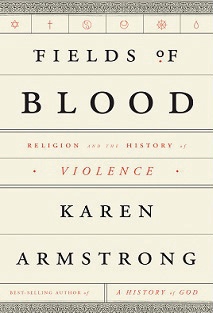 By Karen Armstrong (Knopf, 2014)
By Karen Armstrong (Knopf, 2014)
You can almost hear Richard Dawkins crowing. From the terror instigated by ISIS to the strife in the Central African Republic, there appears to be mounting evidence on the side of those who blame religious belief for global conflicts. Noted author Karen Armstrong challenges that consensus in this sweeping history of world religions and their relationship to violence.
Armstrong shows the difficulty of isolating religion as a lone culprit, seeing as our premodern ancestors drew no distinction between the sacred and secular. Surveying ancient empires of the Middle East, Europe, India, and China, she finds that religion was inseparable from politics. As warfare grew to protect the interests of the ruling class, so did a long, sordid history of states using religious language to justify military aims.
And though religion often played chaplain to state-sponsored violence, it could also be its conscience. Armstrong calls attention to the prophets and sages in each tradition that counseled peace. Unlike Reza Aslan, she finds no proof that Jesus was a violent zealot, but rather that he taught an “alternative to the violence and oppression of imperial rule.” She also identifies a strong pacifist strain in the early church that only fell out of favor when Rome co-opted Christianity.
Turning to recent history in the final section, she grows more prescriptive, suggesting that global terrorism is the product of deviants (and indirectly, U.S. foreign policy) rather than true believers. On the other side are people like Bill Maher, who believe ISIS and Boko Haram are fueled by sincere faith.
Whether or not Armstrong succeeds at spreading the blame around, her book invites further reflection on the sheer potential of religious belief—not only its deployment for questionable ends, but also its remarkable self-correcting tendencies. It may not be the final word, but it’s a sane entry into an endlessly charged debate.
This review appeared in the January 2015 issue of U.S. Catholic (Vol. 80, No. 1, page 43).












Add comment